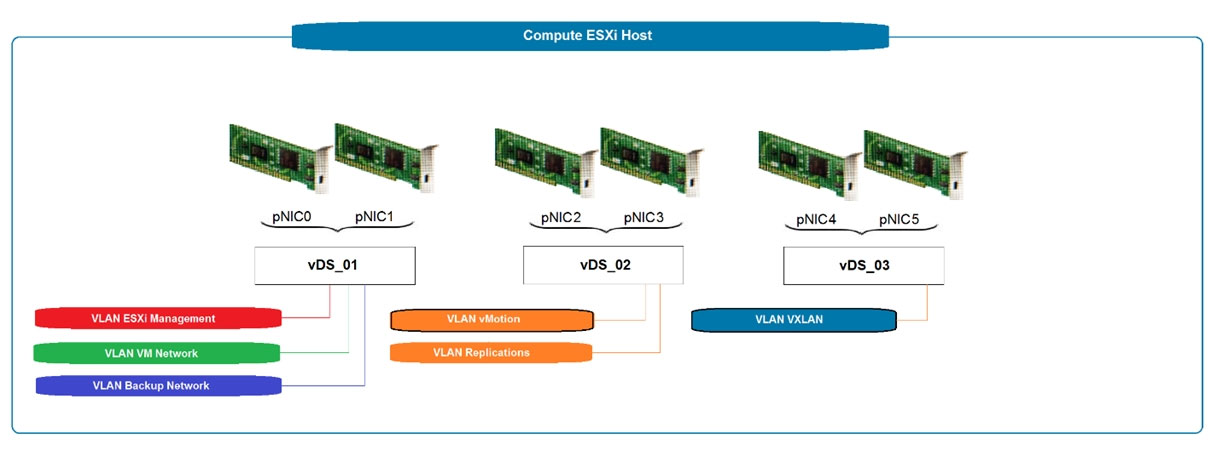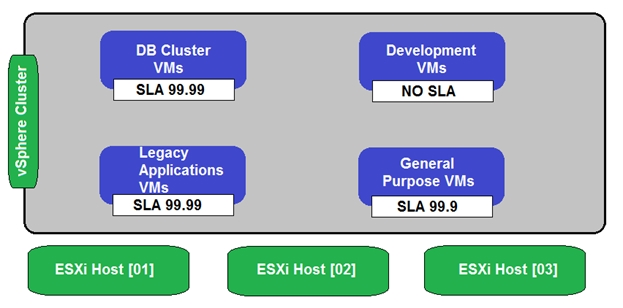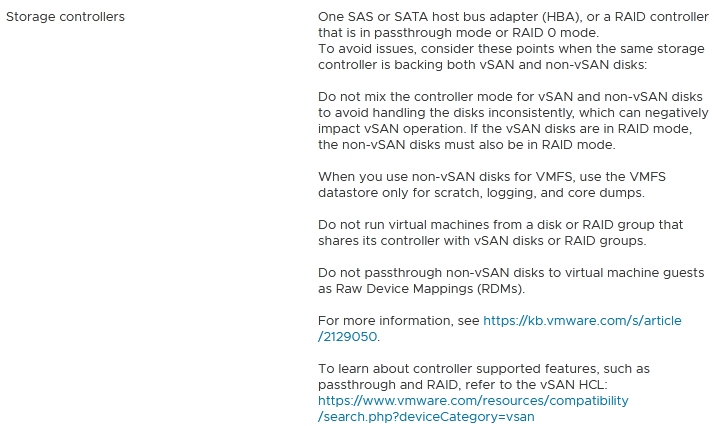Refer to the exhibit.
During a requirements gathering workshop, the architect shares the following diagram:
What should the architect recommend for guaranteed throughput for each service?
B
A customer is deploying a new cluster and wants to be able to patch and update two hosts in parallel. The cluster must be able to maintain N+1 resiliency across the remaining hosts while patching activities are performed. The current expected utilization of the platform requires a minimum of two hosts to support all of the virtual machines.
What is the minimum number of hosts the customer will require in the cluster in order to meet the required resiliency level?
C
A new vSphere platform is being created. The platform will host virtual machines that will run management services and line-of-business applications.
What should the architect consider when designing the number and type of clusters required?
B
An architect is creating a network design for a new vSphere environment.
Based on customer requirements, the environment must support the following types of traffic:
✑ Management
✑ vMotion
✑ vSAN
✑ Fault Tolerance
✑ Virtual machine traffic, which cannot be impacted by other types of traffic
Which design recommendation can the architect make for a resilient infrastructure with vSphere network service tiering?
A
An architect is designing a vSphere environment for a customer based on the following information:
✑ The vSphere cluster will have three hosts only due to budget considerations.
✑ A database cluster (node majority) consisting of three virtual machines will be running on the vSphere cluster.
Which two recommendations can the architect make so that the customer achieves the highest level of application availability while taking into consideration operational resiliency? (Choose two.)
BC
During a requirements gathering workshop, the customer provides the following requirement (REQ) and constraints (CON):
✑ REQ01: The customer is looking for a way to limit database virtual machine (VM) placement to save on CPU licensing costs.
✑ CON01: There is a single cluster with no budget to scale.
✑ CON02: All virtual machines must run on the consolidated cluster.
Which two design decisions should the architect make to meet the customer requirement? (Choose two.)
CE
Refer to the exhibit.
During a requirements gathering workshop, a customer shares the following diagram regarding their availability service-level agreements (SLAs):
The customer states that there is no application level availability for legacy applications.
Which recommendation could the architect make to meet the customer's high availability requirements for the legacy applications virtual machines?
A
Which two statements are true about gathering functional business and application requirements? (Choose two.)
AC
An architect is designing a vSphere environment for a customer and learns that the customer has:
✑ A single vSphere cluster
✑ Two storage arrays with different RAID capabilities
Which two design decisions should the architect make to maximize data availability and data performance for this customer? (Choose two.)
AC
An architect is planning the physical server configuration for a vSAN-based infrastructure.
Which operations mode should a RAID controller support to minimize potential server downtime during physical disk failures?
A
Reference:
https://docs.vmware.com/en/VMware-vSphere/7.0/com.vmware.vsphere.vsan-planning.doc/GUID-4B738A10-4506-4D70-8339-28D8C8331A15.html